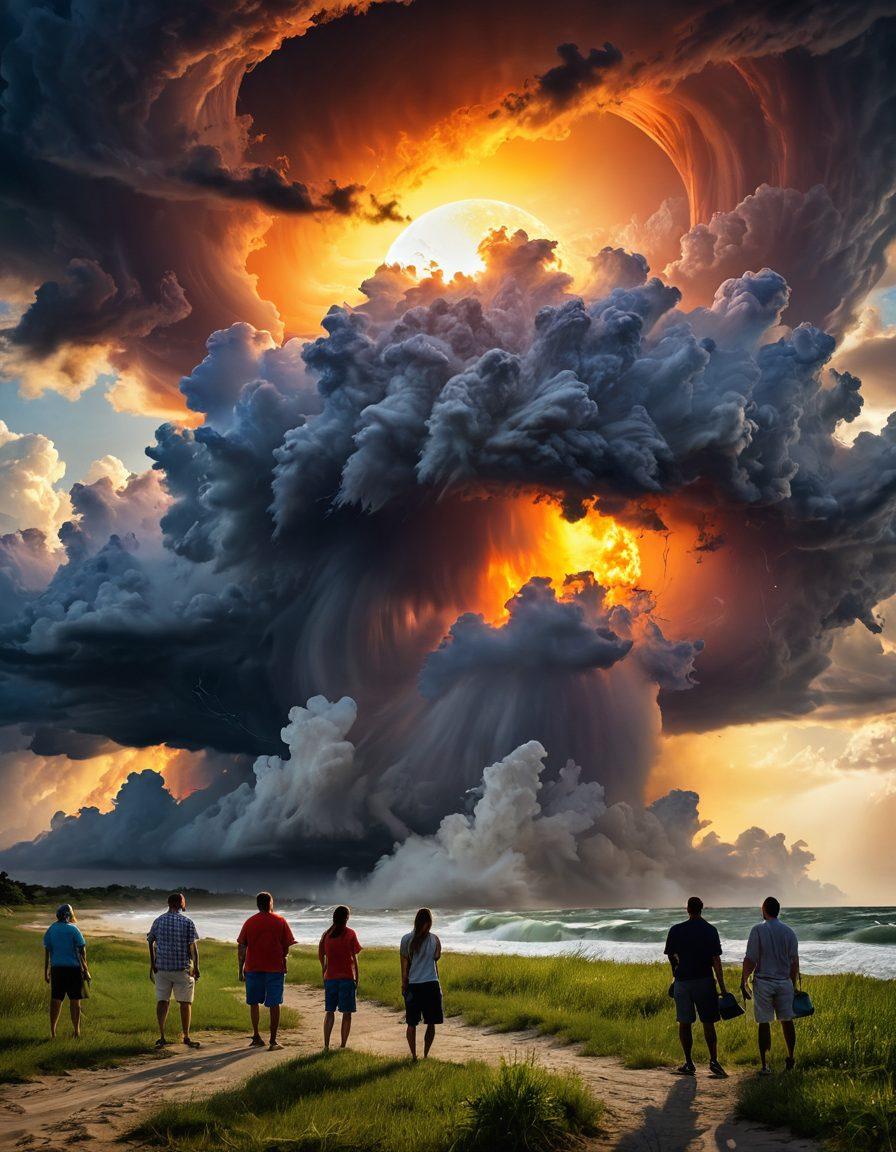Navigating the Elements: Your Ultimate Guide to Weather Blogging and Climate Data
In the realm of online communication, few mediums can capture the essence of our ever-changing environment like a weather blog. Imagine starting your day with a steaming cup of coffee, but instead of reading the morning news, you’re diving into a meticulous digital narrative about the latest temperature tracking, hurricane updates, and atmospheric analysis. It’s a world where data meets creativity, where your passion for the weather can transform into an engaging online journal for climate enthusiasts. But how do you master the art of weather blogging? Let’s explore some tips to captivate your audience and become a go-to source on your chosen climate site.
First and foremost, the power of storytelling cannot be overstated in your weblog. Think about the most memorable weather events you’ve encountered. Maybe it was the unexpected snowfall that canceled your plans or a sunny day that felt like pure bliss. Each weather phenomenon has a story behind it, waiting to be shared. Consider starting your posts with anecdotes that resonate with your readers' memories—quote their experiences, ask intriguing questions to draw them in, like, 'Do you remember the last time a thunderstorm caught you off guard?' Incorporating personal narratives will create a connection and keep your content relatable across your web publication.
Next, embrace clarity and conciseness in your content. A weather blog that dives deep into climate data can easily overwhelm even the best of us. Aim for a balance between informative articles and easy-to-digest posts. Break down complex meteorological concepts into digestible portions, employing visuals and infographics wherever possible. Think about adding a quick glossary for newcomers to meteorology terms or summarizing key points at the end of your posts. Above all, strive for a conversational tone that invites your readers to engage rather than alienate them with jargon. Make your posts feel like a chat with a knowledgeable friend, rather than a lecture from a weather scientist.
Variety in your blogging style also keeps your audience on their toes. Mix up your posts by incorporating different types of content platform features, such as interviews with meteorologists, Q&A sessions, or guest posts from fellow climate enthusiasts on 'weather underground' experiences. Don’t hesitate to share lighthearted or humorous takes on weather, alongside serious articles that delve into precipitation trends or long-term climate reports. Reflect on the idea that every article should contribute to a larger narrative about our planet. How do your individual insights culminate into a comprehensive understanding of the climate? By intertwining your findings with engaging storytelling, you'll draw regular visitors to your site.
Lastly, don't forget to utilize interactive content to keep your audience engaged. Polls about weather forecasts, engagement through comments sections, or even photo challenges can convert passive readers into active participants within your meteorological blog. Expand your reach on social media by sharing quick weather updates or interesting findings drawn from your posts. Encourage user-generated content and connections by creating a community-driven space that fosters discussions on climate data and weather phenomena. Ask yourself: how can I make my blog a fun and dynamic hub for like-minded individuals passionate about the weather? Building a strong community around your digital narrative will not only enhance your blog's visibility but enrich the entire blogging experience.
In conclusion, mastering the art of weather blogging is about more than just sharing facts and figures. It's a journey where passion meets skill, where creativity enhances understanding. So, dig deep into the fascinating world of atmospheric analysis, and weave climate stories that inspire and educate. How will you connect with your readers and create captivating posts that educate on the intricacies of climate and weather? Remember, each post is not just an article; it’s an opportunity to build a legacy in the world of weather blogging. Take those first steps today and watch as your blog transforms into a vibrant hub of climate discussion and engagement.
Harnessing Climate Data: How to Create Impactful Weather Content
In the realm of weather blogging, the potential to captivate and inform is immense. Picture this: It’s a stormy Wednesday afternoon, and your audience is glued to their screens, dying to know if they’ll need an umbrella tomorrow. As a dedicated weather enthusiast, you can become their go-to source by harnessing climate data to create impactful weather content. So, how do you transform ordinary weather updates into compelling digital narratives that resonate with your readers? Let’s dive into the world of climate data and discover the art of weather blogging that speaks to your audience's needs.
First, let’s discuss the crucial role climate data plays in shaping your content. By incorporating accurate and up-to-date meteorological data, you’re not just sharing information; you’re building trust. Data from reputable sources like Wunderground (Weather Underground) can enhance your article's credibility. When discussing complex concepts like atmospheric analysis or temperature tracking, infuse storytelling. Wrap data points around relatable experiences—like how a sudden drop in temperature might affect a weekend barbecue. Stories draw people in; they remember narratives far more than mere facts.
Have you ever pondered what makes a weather blog stand out among countless content platforms? The answer often lies in the uniqueness of your voice. Engaging weather blogs don’t just regurgitate forecasts. They provide a digital journal of the weather's influence on everyday life. Whether you share personal insights, in-depth analyses, or even anecdotes from the community regarding recent hurricane updates, a conversational tone helps bridge the gap between expert and reader. Ask genuine questions to encourage engagement: 'How did last week’s precipitation impact your garden plans?' or 'What are your go-to tips for staying safe during severe weather?'.
To turn your web publication into a must-read environmental blog, utilize visual aids and data visualization tools to present climate data engagingly. Charts, graphs, and infographics can be your best friends when explaining trends or unusual weather patterns. For instance, if there’s been an unusual spike in temperatures over the past decade, illustrate it with a stunning graph that vividly depicts this shift. Visual storytelling enhances understanding and retention, making your post more impactful than plain text ever could. Remember, a picture is worth a thousand words, especially in the world of climate blogs.
Finally, encourage interaction! Your audience should feel like they're part of the conversation. Incorporate polls or comments sections where readers can share their thoughts on recent weather forecasts or personal experiences related to your content. This turns your weather blog into a community space, fostering loyalty and engagement. Each blog post is not just a solitary article; think of it as a continuous dialogue with your online journal and expand upon the feedback you receive. With dedication and creativity, your blogging efforts can make a significant impact, driving awareness and appreciation of vital climate data and its role in our daily lives.
From Hurricanes to Heatwaves: Engaging Your Audience with Meteorological Insights
In today’s fast-paced world, where climate change and unpredictable weather patterns dominate headlines, delving into the world of meteorological insights can be one of the most rewarding avenues for a blogger. If you’ve ever seen a powerful hurricane slam into the coast or experienced the sweltering heat of a summer heatwave, you know firsthand the impact that weather can have on our daily lives. So how can you captivate your audience with such urgent and dynamic topics? This guide will help you transform your online journal into a vital resource on meteorological phenomena, from hurricanes to heatwaves, energizing your content platform.
Picture this: a reader scrolling through their feed, suddenly stopped in their tracks by a compelling article on hurricane updates. ‘What’s next for our coast?’ they think, eagerly clicking the post to discover insights and forecasts that could affect their community. Your goal as a weather blogger is to create a digital narrative that not only informs but also sparks action and discussion. Start by weaving storytelling into your weather narratives. Share tales of survival and preparation, or transport your readers to the eye of the storm with vivid descriptions of atmospheric analysis. Publishers like Wunderground and Weather Underground have mastered this art by offering detailed yet accessible climate data that enables readers to connect emotionally with the topics.
When crafting your weather blog, consider varying your sentence structure to maintain interest. Short, punchy sentences can heighten tension when discussing impending storms, while longer, descriptive lines can cultivate a sense of calm during good weather. Questions can also serve as powerful hooks: 'Are we prepared for the next big hurricane?' 'What can we learn from last summer's heatwaves?' Engaging your audience with provocative queries invites them to reflect and engage with your content on a deeper level. This conversational tone will turn casual visitors into loyal readers of your environmental blog.
Now, let’s talk specifics—weather forecasts, climate data, precipitation patterns, and temperature tracking should be at the forefront of your posts. But do you really need a meteorological degree to write on these subjects? Absolutely not! Start with local weather updates and gradually expand into more complex topics as you gain confidence and credibility. Utilize various platforms to deliver your content—social media, podcasts, and videos—these diverse formats can cater to different learning styles, making your insights go further. Whatever route you choose, ensure that your articles are actionable, encouraging your audience to prepare and participate in weather preparedness efforts. 'What can you do in your community to combat climate change?'
Lastly, remember that every post is a chance to become a trusted resource in the realm of weather blogging. By consistently publishing high-quality articles with emotional depth and factual richness, you’ll cultivate a loyal following. Collaborate with fellow meteorological bloggers or feature guest experts in your posts to broaden perspectives and deepen discussions. Use captivating visuals alongside your content to boost its appeal. Your weather blog, whether a simple post or an extensive article, has the potential to not only educate but also empower people to face the elements head-on. So, are you ready to become the voice of change and knowledge in your climate site?


